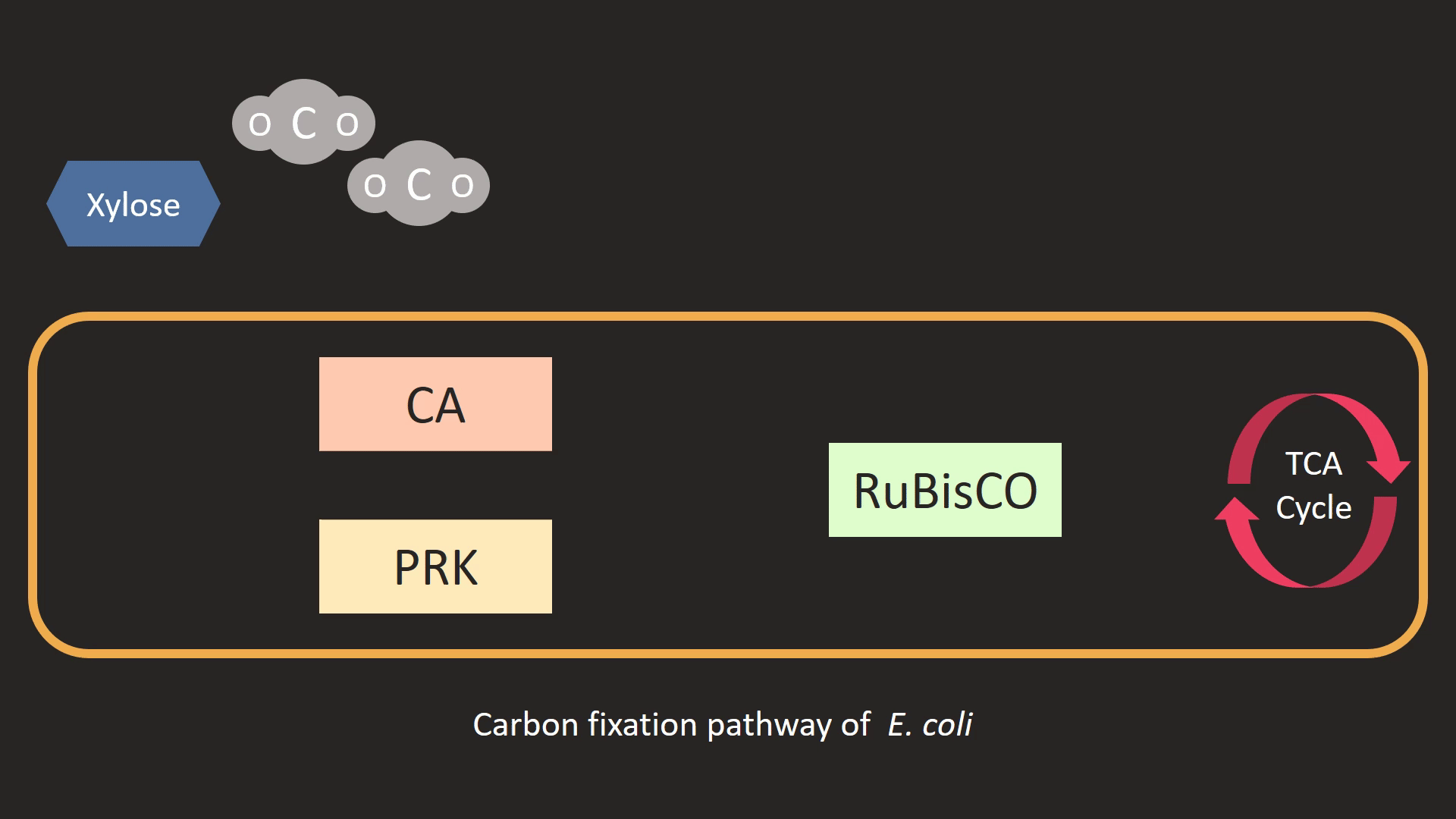| Line 50: | Line 50: | ||
W3110 (K-12 laboratory strain) is reported to be resilient in a stressed environment. | W3110 (K-12 laboratory strain) is reported to be resilient in a stressed environment. | ||
We expected that W3110 will grow well even if the sole carbon source is xylose. | We expected that W3110 will grow well even if the sole carbon source is xylose. | ||
| − | W3110(L5T7) (provided by Dr. Ng) is a constructed lab strain based on W3110. | + | W3110 (L5T7) (provided by Dr. Ng) is a constructed lab strain based on W3110. |
T7 polymerase was inserted into its genome. | T7 polymerase was inserted into its genome. | ||
</p> | </p> | ||
| Line 79: | Line 79: | ||
The optimized sequence was sent to IDT for gene synthesis. | The optimized sequence was sent to IDT for gene synthesis. | ||
We PCR amplified the gene fragments and digest it with restriction enzymes HindIII and SpeI. | We PCR amplified the gene fragments and digest it with restriction enzymes HindIII and SpeI. | ||
| − | After digestion, we ligate the fragments into pSB3K3 plasmid with P<sub>LacI</sub>-rbs(B0034) located upstream of the fragment. | + | After digestion, we ligate the fragments into pSB3K3 plasmid with P<sub>LacI</sub>-rbs (B0034) located upstream of the fragment. |
The plasmid was then transformed into DH5 alpha. | The plasmid was then transformed into DH5 alpha. | ||
</p> | </p> | ||
| Line 200: | Line 200: | ||
<h5 class="question">Transformation</h5> | <h5 class="question">Transformation</h5> | ||
<p class="pcontent">After the construction of various composite parts, | <p class="pcontent">After the construction of various composite parts, | ||
| − | we co-transform them into three <i>E. coli</i> strains: BL21(DE3), W3110, and W3110(L5T7). | + | we co-transform them into three <i>E. coli</i> strains: BL21 (DE3), W3110, and W3110 (L5T7). |
| − | Since BL21(DE3) and W3110(L5T7) contains T7 polymerase, | + | Since BL21 (DE3) and W3110 (L5T7) contains T7 polymerase, |
we co-transformed composite parts that contain T7 promoter into these strains. | we co-transformed composite parts that contain T7 promoter into these strains. | ||
We co-transform plasmid that only contains LacI promoter into W3110. | We co-transform plasmid that only contains LacI promoter into W3110. | ||
| Line 243: | Line 243: | ||
We then exchanged the promoter with the previously constructed plasmid that contains P<sub>T7</sub> and GFP or sfGFP. | We then exchanged the promoter with the previously constructed plasmid that contains P<sub>T7</sub> and GFP or sfGFP. | ||
We initially transformed the constructed plasmid into DH5 alpha for colony screening. | We initially transformed the constructed plasmid into DH5 alpha for colony screening. | ||
| − | We then transformed the plasmid into BL21(DE3) to test its function. | + | We then transformed the plasmid into BL21 (DE3) to test its function. |
We also design another biobrick that contains riboJ (a signal amplify fragment) | We also design another biobrick that contains riboJ (a signal amplify fragment) | ||
at the downstream of P<sub>gadA</sub> to get the signal more clearly and enhance the specificity. | at the downstream of P<sub>gadA</sub> to get the signal more clearly and enhance the specificity. | ||
Revision as of 19:10, 17 October 2018










